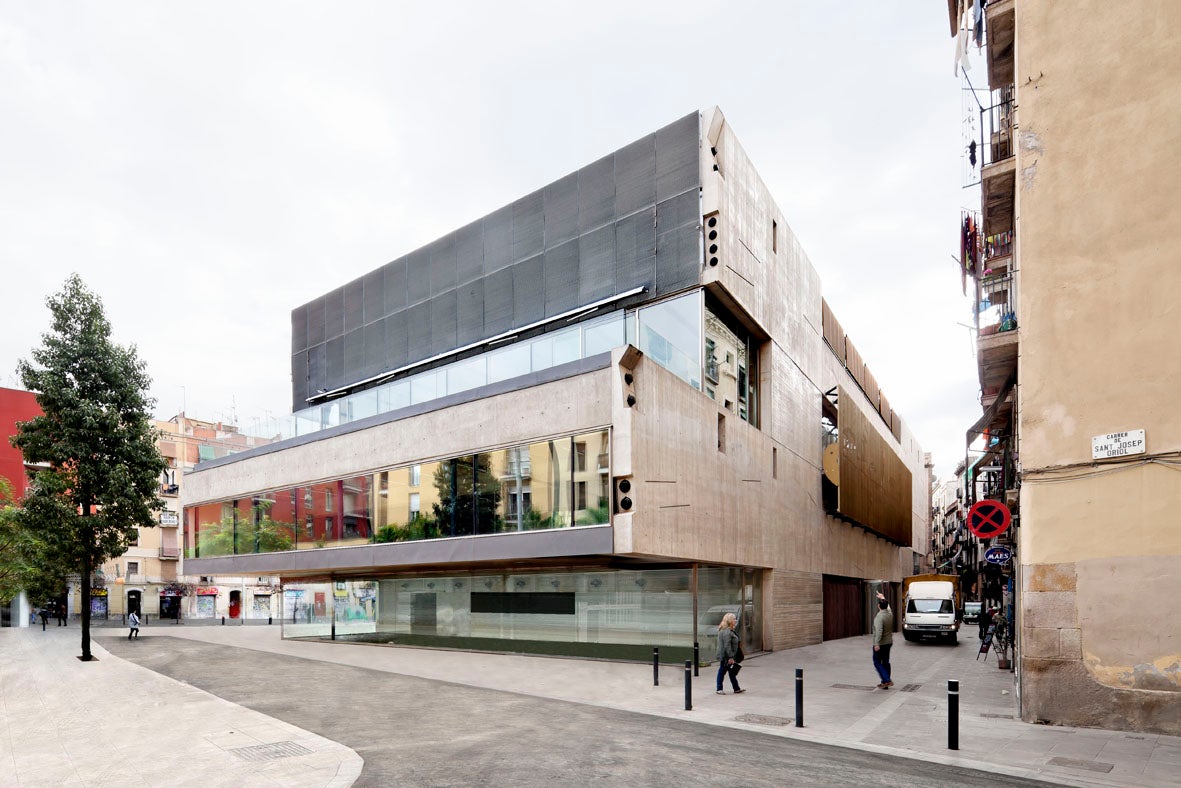The single, stand-alone movie theater has transformed quite a lot in its short life. Lone screens were originally mainstream staples (one for every town) and took on a life as local social centers, with the architectural attention to boot, before dying off to make way for anonymous, one-size-fits-all megaplexes. As this transformation matures into the digital age, stand-alone cinemas have found new life as an independent fascination. In an era when the majority of video is consumed on personal devices, we’ve seen an increasing appreciation for treating movie-going as a unique experience rather than a typical Saturday night distraction.
As such, the design of the small, dedicated movie house is experiencing a resurgence, enjoying new freedom to express itself as a singular typology. Many of the examples below place a value on movie-going as a social experience and also celebrate the artistic qualities of filmmaking (several of them are museums). They represent a nascent second life for this building type, playing the same role but embracing a new meaning.

© Mateo Arquitectura

© Mateo Arquitectura
Film Theatre of Catalonia by Mateo Arquitectura, Barcelona, Spain
Set in a neighborhood with ancient roots dating back to Roman times, this cinema blends in by embracing the dilapidated nature of its concrete shell. Various filters have been placed on the wall as glazing, marking both a formal and symbolic gesture to the nature of film projection.

© Rojkind Arquitectos

© Rojkind Arquitectos
Cineteca Nacional Siglo XXI by Rojkind Arquitectos, Mexico City, Mexico
As the official cinema for the national archive of Mexican film, this project sought to expand its mandate and create much-needed public space for the neighborhood around it. As such, a large part of the site was left open for a vast lawn that can host outdoor screenings. The facility itself is split into separate buildings with a stippled canopy marking the passage between them, which lies at the intersection of two major pedestrian axes.

© ADH

© ADH
Zoetrope Cinema by ADH, Blaye, France
Employing allusions to traditional projection equipment, the structural forms of this cinema divide various portions of its program while evoking the image of a zoetrope (a 19th-century optical device). The lobby for the cinema was conceived as a social space, and is housed in a vertical cylinder. The projection rooms, requiring an opaque enclosure to maintain darkness, occur behind perforated panels that display a public artwork on their exterior face.

© Iwan Baan

© Iwan Baan
Eye Film Institute by Delugan Meissl Associated Architects, Amsterdam, Netherlands
The design for this film institute was seen as casting the building itself as cinema — the star in a varied urban panoply. Dramatic forms and materials celebrate the building’s placement at important transitional points in the city, marking the change from such conditions as historic to modern development, and from inland areas to waterfront.

© Wowhaus

© Wowhaus
Summer Cinema at Fili Park by Wowhaus, Moscow, Russia
A bright white roof and wooden bleachers both give recognizable qualities to this outdoor cinema. Topped by a red projector booth, these elements — in combination with a close proximity to expansive open recreational areas — were designed to be easily replicated in parks across Russia.

© Leeser Architecture

© Leeser Architecture
Museum of the Moving Image by Leeser Architecture, Queens, N.Y., United States
Attention to the façade played an important part for this museum, which is composed of triangular rainscreen panels that give it a sculptural quality. An outdoor screening area is available during the summer months, while the interior accommodates a large main theater and a smaller screening room in addition to production offices and collection storage.


© Morely von Sternberg
Images courtesy of Assemble Studio
The Cineroleum by Assemble Studio, London, United Kingdom
Part cinema, part pop-up, this theater makes ingenious use of an abandoned gas station along a busy street in London. The seats were built simply, by volunteers, and concessions are sold in the former station house. Instead of using solid walls to provide darkness for screenings, a simple curtain raises and lowers around the audience, shifting the mood with a powerful signal at the beginning and end of each showtime.

© Rockwell Group

© Rockwell Group
The Elinor Bunin-Munroe Film Center by Rockwell Group, New York, N.Y., United States
Film education takes center stage for this cinema, which is housed in the cultural mecca of New York’s Lincoln Center. Previously housing a parking garage and office space, the exterior of this building has been transformed into an inviting, glass-faced film center with two screens, a café and an amphitheater.









